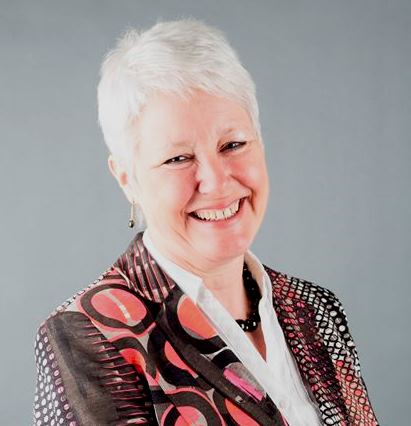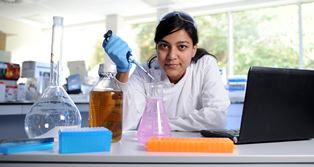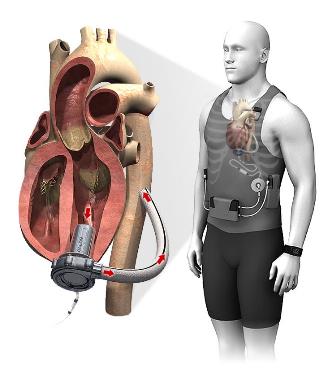Supercomputers: powering medical innovation to enable the industry to achieve more
Karen Padmore, Operations Director at High Performance Computing (HPC) Wales, explains how supercomputing can be used to help speed-up breakthroughs in medical research.
11 June 2014
 Ask any doctor how they would cope without a stethoscope
and there’s a good chance the general consensus would be ‘with
difficulty’. Now used by pretty much every medical speciality, this
versatile tool has revolutionised the way doctors operate, enhancing
their ability to detect, analyse and respond to issues early.
Ask any doctor how they would cope without a stethoscope
and there’s a good chance the general consensus would be ‘with
difficulty’. Now used by pretty much every medical speciality, this
versatile tool has revolutionised the way doctors operate, enhancing
their ability to detect, analyse and respond to issues early.
The medical industry has progressed a long way since the stethoscope’s introduction almost 200 years ago — from the discovery of the molecular structure of DNA to antibiotics, insulin, vaccinations and countless ingenious medical devices.
Supercomputers are now powering the next generation of medical innovation. The advanced technology is already being used across a range of industries to address many of the challenges facing modern society; whether it is predicting weather patterns and consumer trends, mitigating the effects of climate change or, in the case of the medical industry, developing new drugs and treatments to address a wide range of debilitating diseases and conditions. The scale and complexity of these problems mean that traditional problem-solving techniques are both costly and time-consuming.
Even in an age of unprecedented technological advancement, medical researchers working on cures for heart disease, cancer, obesity and many other human ailments, still perform basic trial and error experiments in laboratories. This approach yields excruciatingly slow results. Supercomputers have the ability to speed up these processes considerably.
So what is the definition of a supercomputer?
Also known as high performance computers, supercomputers can be thought of as large collections of individual computers connected together, working in parallel on a single problem and are capable of performing complex and high-volume calculations and simulations at top speeds, reducing analysis times from weeks to days, or even hours.
HPC Wales’ supercomputing network can run 320 trillion operations per second. To give you an idea of just how fast this is, imagine the following: All seven billion people in the world have a calculator and are asked to perform one calculation per second twenty-four hours a day, nonstop. It would take the world’s population approximately thirteen and a half hours to do what our supercomputing network can do in just one second. If we think of a regular computer travelling as fast as a snail, a supercomputer is a jet aeroplane.
The incredible processing speed of a supercomputer enables the handling of ever-increasing medical data sets and the building of predictive models of disease. The University of South Wales’ Genomics and Computational Biology researchers are using supercomputing to understand bacterial evolution to help transform the current state of antibiotic treatments.
With the recent rise in drug resistant infections, such as MRSA and tuberculosis, many scientists and doctors are now concerned about a potential antibiotic crisis. This research is aiming to predict drug resistance and help GPs to select the most appropriate antibiotics for their patients.
Researchers are using supercomputers to understand how generally harmless bacterial strains can evolve into toxic strains, such as E Coli 0157. The technology has enabled the researchers to analyse vast amounts of data at incredible speeds, in this case reducing the data analytics time from days to hours.

Farzana Rahman from the University of South
Wales, who is spearheading the research into the next-generation
antibiotics
Projects like this demonstrate the revolution occurring in laboratory-based sciences and computing technologies. Researchers can process enormous volumes of diverse data very efficiently. At the same time, new experimental techniques are being developed. Integrating these two sets of advances provides access to an unprecedented amount of information about biological processes.
Experts predict that in the very near future, when every person is genotyped, the notion of personalised medicine will become a reality. Healthcare decisions and practices will be tailored to individual patients by integrated use of genotypic and phenotypic information as well as medical and family history.
However, access to the amount of newly available biological information creates its own challenges – namely managing and processing that information, and producing results that are medically actionable. Overcoming these issues requires the use of high performance computing systems.
Supercomputers have many applications that are equally invaluable to medical appliance manufacturers, including advanced modeling and simulation and the ability to render high-definition 3D graphics. This means new designs can be tested with different parameters, evaluated and refined without the need for physical prototypes. This reduces the time, labour and cost involved in bringing products to market, while improving research and development capabilities.
Advanced modeling and simulation enables these providers to innovate and improve existing products and services, giving them a competitive edge through more efficient product design and improved manufacturing processes.
Modelling a novel blood pump
Swansea-based Calon Cardio-Technology Ltd is a great example of how supercomputing technology has been used to aid the development of the next generation of affordable, implantable micro blood pumps for the treatment of chronic heart failure. Ventricular Assist Devices (VADs) have the potential to save many thousands of lives as they provide an alternative for heart transplants.
While they are a viable treatment for heart failure, the current generation of VADs are large, requiring highly invasive surgery which is very costly and causes long term damage to blood that can cause further health problems to the patient.
Calon Cardio is addressing these problems through the development of a much smaller and cheaper VAD that can be directly implanted into the heart, minimising the damage to the blood, offering an extended life expectancy and helping to ensure an improved quality of life for the patient.
When simulating the flow of blood inside the VAD, using a standard desktop computer results in a very long cycle time for each simulation. Typically, running just one case could take up to a week, whereas with a supercomputer the process can be reduced to less than a day — even a few hours. Results are generated at an unprecedented speed, ensuring that the design process is as efficient as possible.

Illustration of the Calon Cardio ventricular
assist device
and how it would be used in a patient
Until recently, the high costs associated with supercomputing has meant that the technology has only been within reach of larger institutions and corporations. However, that is changing fast. Not only are costs for using supercomputers falling but in the UK there are a number of associated grants available, both home-grown and from the EU.
Businesses now do not have to invest in their own hardware and software to benefit from supercomputing technology, with some supercomputing providers now offering remote access to the technology via a simplified web browser interface along with the training and support required to exploit it effectively. Businesses and academics now no longer require specialist HPC knowledge to benefit from its power.
The message for medical researchers and product designers it that supercomputing can transform research and modelling work, and there are a number of funding options out there. The examples outlined above provide only a snapshot of how supercomputers are powering potentially life-saving work, both by businesses and academics. This is why, I believe, it will not be long before the medical industry finds HPC technology as valuable as the trusty stethoscope.
Further information
See a video of Farzana Rahman, University of South Wales’ Genomics and Computational Biology researcher, talking about her inspiration to study antibiotics: http://vimeo.com/91699672
High Performance Computing (HPC) Wales: www.hpcwales.co.uk/